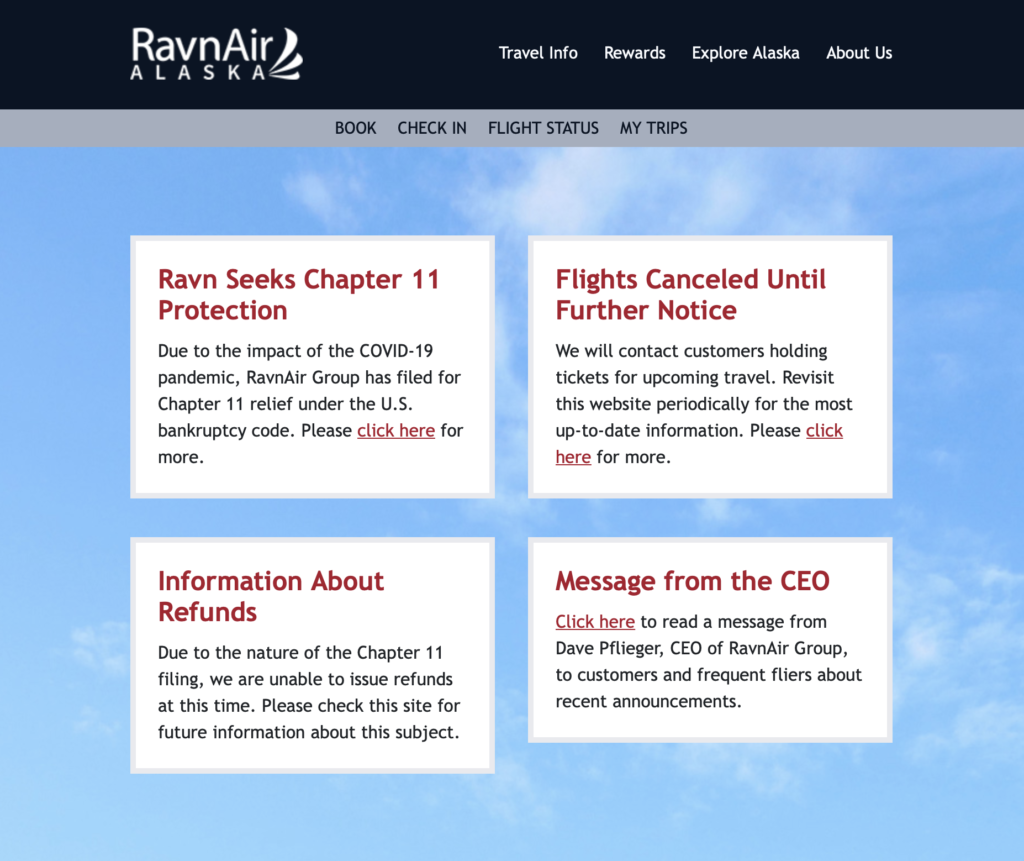Things are moving fast. On Thursday, April 2 Ravn Air, one of the largest airlines that serves rural Alaska, Ravn announced that they were “scaling back” which meant no service to most rural villages. Ravn is one of two commercial airlines that serve the communities that make up my district. Then just three days later on April 5 Ravn announced that they were ceasing all operations and filing for bankruptcy. This had had a huge impact on rural Alaska. While in some instances other carriers committed to taking up the slack, the reality is that these other air carriers also have limited capacity to do much more then they were already doing.
In Akiachak, there are packages in Bethel that have been waiting for delivery to the village for at least four weeks. Also, the village store, the only place to get food and supplies, has not received any deliveries in weeks. The other air carrier for the village has been so backed up that there have been ZERO regular scheduled flights in or out of the villages, and instead passengers are told that they on a waiting list and to keep checking back.

And then it happened on Monday evening, April 7: The first cases of COVID-19 were reported in Bethel, the hub community for so mach of rural Alaska. What has been especially interesting is that the Bethel folks are refusing getting tested for COVID-19 because of the fear of stigma. This means that efforts to contain the virus are going to be futile. Meanwhile, there are regular reports of village residents ignoring village quarantines and moving in and out of Bethel and their communities. Some of this is natural given that villages are not getting supplied with food and other necessary items, and some of it is reckless behavior. Add to this the reality that rural Alaska about 15 people live in each household, and we can see the conditions set for a rapid and devasting spread of the virus.
Meanwhile, Alaska Airlines, the only air service in and out of Bethel, has scaled back their service tremendously. In addition, they aren’t operating full flights in order to keep social distancing. This creates the potential for hundreds of teachers in rural Alaska to not be able to leave the village and return to their families. The principal in one of our schools detached his retina last week, and is still trying to get a flight out of the village to a hospital.
My District is finally taking steps to figure out how to get teachers home today, Tuesday April 7. It sounds like we’ll have teachers distribute homework packets to students that will cover the remainder of the year, and then somehow work up a system for having local folks collect the packets, scan them, and email them to teachers for grading.
Meanwhile, across the state rural villages are reacting in different ways as the epidemic moves from “something that is happening out there” to “something that is happening here”. Keep in mind that in many cases, villages, or groups of villages are sovereign tribal governments. In the North Slope, the tribe has actually commandeered the Ravn facilities so that they won’t be stranded without a way to move goods and people. We are getting reports of other villages completely closing their borders as well.
Oh, and have I mentioned that there[s a high probability of severe flooding this spring? It is true. The thick ice and heave snowfall this winter increases the likelihood that the frozen Kuskokwim river will create an ice dam as it thaws, flood the surrounding area. Our villages have a history of this happening. When it does, the school buildings become the community’s high ground and shelter. How will we handle the community retreating to the school if we are also in a quarantine? How will we get supplies during flooding in an already stressed supply line? Let’s hope these aren’t problems we have to solve.